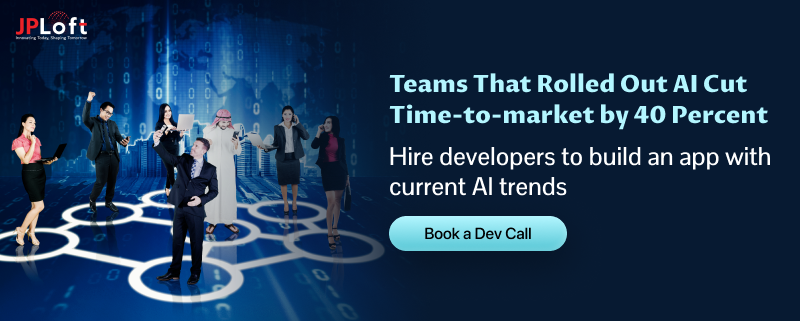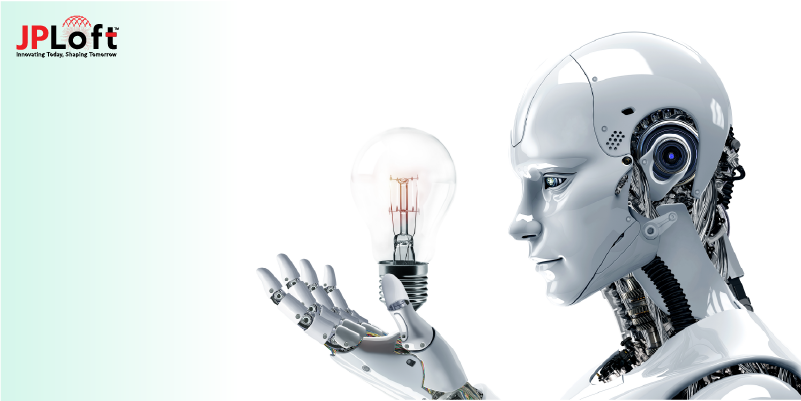Key Takeaways:
Introduction: AI’s trillion-dollar trajectory means ignoring it now guarantees costly, irreversible late starts.
Where Are We Now: Tracking shifts early lets companies pivot resources before customer expectations permanently reset.
Top AI Trends: Generative, multimodal, and quantum advances together redefine product velocity, slashing idea-to-launch timelines dramatically.
Industry Use Cases: Real deployments, fraud sensors to digital twins, prove AI already drives measurable profit and efficiency.
Why This Matters for Entrepreneurs: Early AI adoption creates differentiated offerings, attracts investment, and establishes defensible competitive moats swiftly
Sam Altman, the CEO of OpenAI, launches GPT-oss, showcasing the promising growth & innovation shaping our lives.
Surprised it’s coming so soon? Don’t be, AI has already snuck into your day-to-day life.
From chatting with virtual assistants to getting eerily accurate movie picks, AI is becoming a familiar part of modern life.
And it’s only accelerating: the market is set to grow 26.6 % each year, reaching roughly $1.01 trillion by 2031.
But as exciting as today’s tools are, what’s really fascinating is where these advances are headed next.
The top AI trends aren’t just about futuristic robots; they’re shaping the apps you use, the work you do, and the way you experience the world.
Curious about AI, eager to boost your business, or ready to launch your next tech project? Knowing the top AI trends gives you a head start in shaping the future.
Let’s get into the latest AI advancements that are set to make waves in the year ahead. Some might surprise you!
Why You Should Know About AI Trends in 2025?
AI isn’t hiding in the wings anymore; it powers your search results, polishes your photos, staffs customer-service chats, and even books your next dentist appointment.
Every fresh model or feature bumps the bar, think faster checkouts, smarter product picks, and instant translation.
Tracking these Artificial Intelligence trends lets you pivot early: integrate the right API, upskill your team before the talent scramble, and budget for tomorrow’s essentials rather than yesterday’s upgrades.
Miss the wave and you’ll be scrambling while competitors launch experiences that feel almost telepathic.
If you’re plotting how to create an AI app of your own, this year’s (2025) releases double as a roadmap:
-
Gemini 1.5 Pro’s two-million-token context feed an entire codebase or video library into a single prompt and surface instant summaries or refactors.
-
ChatGPT Store plug-ins are one-click add-ons that draft press releases, crunch spreadsheets, or plan road trips, turning the chatbot into a full app platform.
-
Microsoft Copilot for Outlook and Teams auto-writes meeting recaps, action lists, and reply drafts, erasing “follow-up fatigue.”
-
Adobe Firefly for video and audio stretches text-to-image magic into motion graphics and soundtracks directly inside Premiere Pro.
-
Perplexity Pages spins a single search query into a polished, citation-rich microsite in minutes, hinting at AI-authored content hubs.
Each launch is a nudge toward fresh AI app business ideas you can adapt, proof that tracking the AI trends to explore in 2025 keeps you ahead of a market that’s always three versions forward.
You don’t believe us, take a look at the next section about AI stats and relevant quotes.
Growing AI Market Stats of 2025
So, are you wondering what the top AI trends are to explore? Well, we will get into it, but first, we will understand the growing market of Artificial Intelligence, NLP and ML.
-
Artificial Intelligence, overall. Analysts at Fortune Business Insights project the global AI market will jump from about $294 bn in 2025 to $1.771.62 bn by 2032, compounding at roughly 29 % a year.
-
Machine Learning, the workhorse sub-sector. Precedence Research estimates ML revenue will climb from $93.95 bn in 2025 to $1407.65 bn by 2034, a breakneck 35 % CAGR that outpaces most other software categories.
-
Natural Language Processing, the voice of modern apps. NLP is pegged at $42.47 billion in 2025 and could exceed $791.16 billion by 2034, expanding at an eye-opening 38 % annual rate.
Put simply, every core layer: general AI, ML engines, and NLP interfaces, is compounding at 25 – 40 % a year.
That torrid growth underlines why product teams and investors are tracking new AI breakthroughs so closely: the market you skip this quarter could double before your next budget cycle.
Top Artificial Intelligence Trends in 2025
The current state of AI technology in 2025 feels a lot like switching from dial-up to fibre overnight.
Every week delivers new developments in AI from multimodal foundation models that see, hear and talk, to wafer-thin chips running language models at the factory edge.
Tech reporters can barely file one “AI Invention” story before the next update lands in their inbox.
Below are the new AI trends 2025 that matter most:
1. Generative AI
Few developments have changed day-to-day workflows as fast as generative models.
What began in 2022 as viral text-to-image memes has matured into enterprise-grade engines that draft 30-page legal briefs, compose royalty-free soundtracks, and spin out entire ad campaigns overnight.
Marketers at a global soda brand, working with a generative AI development company, recently used a private model to create 6,000 hyper-local billboard variations in 12 hours, a job that once took an agency three months.
Developers feed whiteboard sketches into code generators that return fully commented React components.
Because the newest AI technologies and models can be fine-tuned on a company’s own style guides, outputs feel on-brand from the first draft, turning blank pages into collaborative starting points instead of creative cliffs.
- Benefits of Generative AI:
Shrinks concept-to-launch cycles, letting teams test five ideas where they once shipped one.
Drives down content costs while lifting personalization, since models scale to niche audiences with ease.
Unlocks “long-tail creativity,” enabling small businesses to produce TV-quality assets without agency retainers.
- Why It Can Be Game-Changing:
When time and budget cease to be bottlenecks, companies compete on imagination rather than production muscle.
2. Multimodal AI
The hottest AI industry trend for 2025 is the rise of systems that juggle text, images, audio, and video inside a single context window.
Imagine asking an assistant to “explain this quarterly report,” then watching it generate a voice-over slide deck, pull key numbers into a spreadsheet, and highlight anomalies in a short video summary, all in one pass.
Telemedicine firms already feed CT scans and patient histories into multimodal models that draft preliminary diagnoses in natural language while marking areas of concern on the image itself.
For accessibility advocates, the tech is a jackpot: deaf users get instant captioning on spontaneous live streams, while visually impaired students receive graphic-rich textbooks converted into descriptive audio.
- Benefits of Multimodal AI:
Collapses siloed workflows by letting one model handle every medium.
Boosts accuracy through cross-modal checks; if the text says “red dress” but the image shows blue, the model flags it.
Makes digital experiences inclusive, translating content into the format each user needs.
- Why It Can Be Game-Changing:
A single model that “speaks” every medium turns the internet into a truly fluid, context-aware space.
3. AI Agents
Autonomous agents are the new office interns, except they never sleep or forget instructions.
Powered by recent advances in artificial intelligence, these bots decompose goals, consult external tools, check their own progress, and iterate until they succeed.
A mid-size SaaS firm, after partnering with an AI agent development company, now relies on one such agent to run its quarterly competitor-pricing audit: it scrapes websites, updates Excel sheets, drafts executive slides, and schedules a review call.
Marketing teams use agents to build outreach lists, personalize emails, and A/B-test subject lines in an endless loop.
Because agents learn from outcome data, their hit rate improves week after week without developers rewriting code.
- Benefits of AI Agents:
Automate multi-step tasks, travel booking, invoice reconciliation, CRM updates, end-to-end.
Free human staff for judgment calls and relationship work rather than mechanical clicks.
Integrate easily with APIs, so deployment feels like adding a teammate, not a software overhaul.
- Why It Can Be Game-Changing:
Workflows evolve from manual checklists to self-driving processes, letting companies scale output faster than headcount.
4. Cybersecurity AI
Every fresh line of code widens the attack surface, and human analysts can’t keep up.
Machine-speed offence now demands machine-speed defence, powered by AI solutions like those developed by an Artificial Intelligence app development company in Dubai.
These systems monitor packet flows, logins, and database queries in real-time.
One global bank feeds 15 billion events per day into a model trained to spot subtle deviations, think impossible travel times or insider privilege creep.
During a recent zero-day browser exploit, the system flagged abnormal query strings five minutes before vendors issued a patch, letting the team isolate vulnerable machines instantly.
On the dark side, attackers leverage generative models to craft spear-phishing lures that nail corporate tone. The result is an AI arms race where standing still equals losing ground.
- Benefits of Cybersecurity AI:
Detects and quarantines threats in seconds, not hours, slashing breach dwell time.
Automates level-one alert triage, freeing specialists for deep forensic hunts.
Learns attacker behaviour patterns, hardening defences with each attempted exploit.
- Why It Can Be Game-Changing:
AI flips security from reactive whack-a-mole to proactive shield, protecting trust in an increasingly digital economy.
5. Assistive Search
Search boxes are learning to talk back. Instead of ten blue links, users now get direct explanations, working code snippets, or concise recipes, complete with source citations.
Powered by recent AI advances in retrieval-augmented generation, assistive search remembers follow-up questions, letting you drill deeper like a chat with a domain expert.
Developers cut debugging time in half by pasting stack traces and receiving targeted fixes. Researchers exploring “digital trends January 2023” sift curated summaries faster than traditional scrolling.
SEO strategies shift too: brands optimize for answer quality rather than keyword density, while publishers focus on authoritative data the model might cite.
- Benefits of Assistive Search:
Slashes research cycles from hours to minutes.
Elevates trustworthy content by surfacing verifiable, citation-backed answers.
Lowers cognitive load for non-experts, broadening access to complex knowledge.
- Why It Can Be Game-Changing:
When getting the right answer is as easy as asking, curiosity accelerates, and so does innovation built on that knowledge.
6. Agentic AI
If agents execute tasks, agentic systems set their own sub-goals and critique progress, a shift that sits at the centre of the Agent AI vs Agentic AI debate.
Think of a product manager in Silicon Valley: presented with “improve onboarding,” the AI drafts hypotheses, mines analytics, and designs A/B tests.
It then rolls out UI tweaks, pivots when metrics disappoint, and logs every decision for audit.
Early prototypes, built with guidance from experienced AI development companies, cut sign-up drop-off by 18 per cent without a single stand-up meeting.
For executives, this new development means strategy cycles compress; for engineers, it means crafting guardrails that keep autonomous creativity both safe and accountable.
- Benefits of Agentic AI:
Tackles ambiguous objectives that lack a clear playbook.
Adjusts to market shocks, competitor launches, and policy changes on the fly.
Produces transparent reasoning chains, easing stakeholder buy-in.
- Why It Can Be Game-Changing:
Self-directed AI transforms tools into proactive collaborators, reshaping org charts and decision speed.
7. Sentimental AI
Algorithms once struggled with sarcasm; now they catch eye-rolls.
Sentiment-aware models parse vocal cadence, word choice, and even micro-expressions, gauging emotions in milliseconds.
A Southeast Asian e-commerce giant routes frustrated callers to senior agents while happy ones receive quick self-service links, boosting satisfaction scores by 22%.
Mental-health apps monitor voice notes for stress signals and suggest breathing exercises or therapist check-ins.
Because this latest trend in AI interprets unstructured human nuance, experiences feel more compassionate and sometimes life-saving.
- Benefits of Sentimental AI:
Personalizes responses in customer support and coaching apps.
Flags churn risk early, letting businesses intervene before users quit.
Powers adaptive learning platforms that shift tone based on student confidence.
- Why It Can Be Game-Changing:
Tech that understands feelings bridges the empathy gap, turning cold interfaces into companions people trust.
8. Quantum AI
Quantum hardware still lives in temperature-controlled labs, yet hybrid workflows mixing qubits with GPUs are inching closer to real-world impact.
Researchers at a pharma giant used a quantum-enhanced sampler to prune chemical search space by 100×, accelerating lead-compound discovery.
Logistics firms explore quantum optimizers that shave miles off delivery routes, promising fuel and carbon savings.
Though early, such AI breakthroughs in 2025 signal a future where quantum assists in the heaviest mathematical lifts, letting classical models train faster and solve previously intractable problems.
- Benefits of Quantum-Boosted AI:
Explores vast solution spaces beyond classical reach.
Speeds up optimization and simulation tasks in materials, finance, and health.
Opens new research vistas, from clean-energy catalysts to next-gen encryption.
- Why It Can Be Game-Changing:
Quantum acceleration could vault scientific timelines forward, unlocking discoveries a decade sooner than expected.
9. Digital Twins
Digital twins are richly detailed virtual replicas fed by real-time sensor data.
A Dutch port authority runs a live twin of its harbour: tides, crane loads, and wind gusts update every minute, letting staff simulate ship berths before granting clearance.
Automakers spin up twins for entire assembly lines, testing robot choreography during downtime.
Health-tech startups build organ-level twins to model drug effects without animal trials.
Fueled by the latest AI development, these systems blend physics engines and machine-learning forecasts for unprecedented foresight.
- Benefits of Digital Twins:
Predicts equipment failures days in advance, slashing unplanned downtime.
Enables zero-risk experimentation, tweak the twin, not the plant.
Informs city planners on traffic, pollution, and energy scenarios before pouring concrete.
- Why It Can Be Game-Changing:
A living mirror of the physical world turns intuition into data-driven certainty, letting leaders act faster with smaller margins for error.
10. Conversational AI
Ever since top apps like ChatGPT, Perplexity AI and many others taught millions that talking to software can feel natural, maybe even fun, enterprises have rushed to give their own products a voice.
The smartest teams don’t start from scratch.
Instead, they team up with an AI Chatbot app development company.
These specialists already blend retrieval-augmented generation, sentiment detection, and secure API calls into one seamless conversational layer.
Airlines now field voice bots that apologise and rebook you in the same breath.
Banks let customers ask, “Why was my card declined in Madrid?” and get an answer pulled from real-time fraud checks.
Retailers roll out multilingual assistants on web chat, WhatsApp, and smart speakers, so shoppers can swap sizes without hunting for a form.
- Benefits of Conversational AI:
Shrinks response times from minutes to seconds, lifting satisfaction and loyalty.
Scales personalised support to millions without ballooning headcount.
Turns everyday questions into a goldmine of intent data for product and CX teams.
- Why It Can Be Game-Changing:
Friction-free dialogue transforms customer service from a cost centre into a relationship engine, freeing humans for the empathy-heavy cases while AI handles the rest.
Game-Changing Industry Use Cases for AI
Scroll any tech blog and you’ll see the top AI trends plastered across splashy infographics, generative art, quantum accelerators, you name it.
Fun reading, but the real excitement kicks in when those ideas escape the slide deck and start shaving costs or juicing revenue on an actual balance sheet.
Below, we unpack seven sectors that have already converted today’s best AI trends into practical wins.
1. Finance & Banking – Generative Decoys Outsmart Fraud Rings
AI in Finance is taking over the industry.
Generative models aren’t just painting portraits; they’re drafting counterfeit transactions that help anti-fraud engines learn faster.
A European lender pipes these AI-written “bad behaviours” into its detection stack, freezing real fraud before your coffee gets cold.
The engine’s seamless fit with legacy cores came courtesy of a FinTech app development company, a reminder that the coolest Artificial Intelligence trends still need boring integration to shine.
2. Healthcare & Life Sciences – Multimodal Models, Fewer Clipboards
Let’s be honest, AI in healthcare is gaining momentum. Doctors dictate bedside notes while an AI system listens, pulls vitals, and drafts a structured record in real time.
Over in R&D, the same tech models protein binding, cutting months off discovery cycles.
Credit goes to a savvy healthcare app development company that merged hospital lingo with lab data, proving that some of the best AI trends begin with patient charts, not polished demos.
3. Retail & eCommerce – Agents Run Flash Sales at 3 A.M.
Inventory spiking? An autonomous agent now writes promo copy, schedules push alerts, and sets discounts while the marketing team sleeps.
The groundwork, APIs, CMS hooks, and safeguard rails were laid by an e-commerce app development company.
If you’re tracking artificial Intelligence trends that marry creativity and ops, bookmark this one.
4. Manufacturing & Supply Chain – Digital Twins Predict the Next Broken Bolt
A Midwest plant mirrors every robot arm in a software twin, catching vibration anomalies days before failure.
Engineers A/B-test tweaks in the virtual line and roll changes to the real floor during lunch.
The sensor stitching came from an industrial-IoT app development company; the uptime bump is now legend on every shift.
Among current AI app trends, twins rank high because they shrink guesswork to zero.
5. Energy & Utilities – Cyber Guardians Patrol the Grid
An AI sentinel reads SCADA packets and flags odd latency spikes, the first clue of a breach, faster than human eyes.
When a storm looms, the same model pre-positions crews based on pole age and soil moisture.
An energy-software development company handled the nitty-gritty wiring, turning what pundits called a future idea into one of this year’s most practical Top AI trends.
6. Telecom & Media – Sentiment Engines Curate Binge Nights
Opt-in webcams gauge micro-reactions; yawn during a slow scene and the platform queues a snappier pick.
Laugh out loud and it lines up more.
Behind the curtain, a telecom software development company tuned latency and privacy layers, showing how Artificial Intelligence trends can turn “Are you still watching?” into a personalised concierge instead of an interruption.
7. Government & Public Sector – Search Bots Make Red Tape Bearable
Millions of PDFs, decades of statutes, now searchable with a question and plain-English answer.
Chatbots walk citizens through licence renewals, translating jargon on the fly.
A civic-mobile app development company baked in compliance and FOIA nuances, proving public service can ride the same Best AI trends that power Fortune 500 help desks.
What Do These Trends Mean for Leaders?
The latest wave of Artificial Intelligence trends signals a shift from isolated pilots to business-wide playbooks.
Forward-thinking leaders can outpace competitors by treating AI as a management discipline rather than a moonshot experiment.
Let’s understand how they help you:
► Move at product speed
Teams that stay curious about AI app trends ship features in weeks, not quarters.
Modular pipelines and automated guardrails let you release quickly without scaring the compliance team.
► Chase measurable value
The Best AI trends always trace back to a hard metric, shorter sales cycles, higher NPS, and lower downtime.
Tie every proof-of-concept to a KPI the finance desk already watches.
► Guard the data moat
Many Popular Artificial Intelligence app trends thrive on proprietary logs, think turbine sensors or claims notes.
Secure access early so rivals can’t corner the supply.
► Think horizontally
Leading Artificial Intelligence trends show that a single model can serve wildly different units, customer support today, and procurement analytics tomorrow.
Encourage cross-domain brainstorming before you sign another siloed contract.
► Earn user trust every sprint
As new AI trends touch sensitive workflows, transparency is currency. Build in explain-my-answer buttons, robust opt-ins, and plain-language privacy notes.
► Keep skills in motion
The talent you’ll need six months from now will grow out of the projects you start this quarter.
Rotate staff through AI workstreams so capability expands in lockstep with opportunity.
So, if you are ready to take steps ahead, you will need experts by your side.
How JPLoft Helps You Capitalize on New Artificial Intelligence Trends in 2025?
Speak your vision aloud, and see it running before the excitement even wears off.
That’s the practical magic of partnering with an AI app development company like JPLoft. These specialists arrive with proven data pipelines, model libraries, and cybersecurity guardrails already in place.
They absorb your domain knowledge, fine-tune a model to match, and wrap the whole engine in a polished interface that feels tailor-made for your brand.
Better yet, they train your in-house team to iterate post-launch, so expertise stays where it belongs.
The result? You lead the AI conversation while competitors are still drafting memos.
Conclusion
Artificial intelligence is no longer an optional upgrade; it’s the operating system for the next decade of growth.
From generative billboards and multimodal medical scans to quantum-boosted supply chains, the new Artificial Intelligence trends emerging in 2025 are already rewriting the rules of product velocity and customer expectations.
Companies that experiment now will own the conversation when ChatGPT 5.0 and its peers reset the bar yet again; those that wait will spend years catching up.
Whether you’re sketching a brand-new platform or modernising an old one, the only wrong move is standing still. Start small, iterate fast, and let data, not fear-steer the roadmap.
FAQs
ChatGPT (especially with paid plug-ins) tops download charts, followed closely by Perplexity AI for search and Microsoft Copilot inside Office 365.
Multimodal models, systems that handle text, images, audio, and even video in a single prompt, are the industry’s hottest focus.
Embedding generative copilots into existing apps: writing emails, summarising meetings, or generating code snippets inside the tools people already use.
Pick one clear use-case, gather sample data, start with an off-the-shelf API, then A/B-test impact before wider rollout.
Dedicate a cross-functional “AI guild,” run monthly pilot sprints, and allocate 10 % of tech budget to experiments that prove ROI fast.













Share this blog